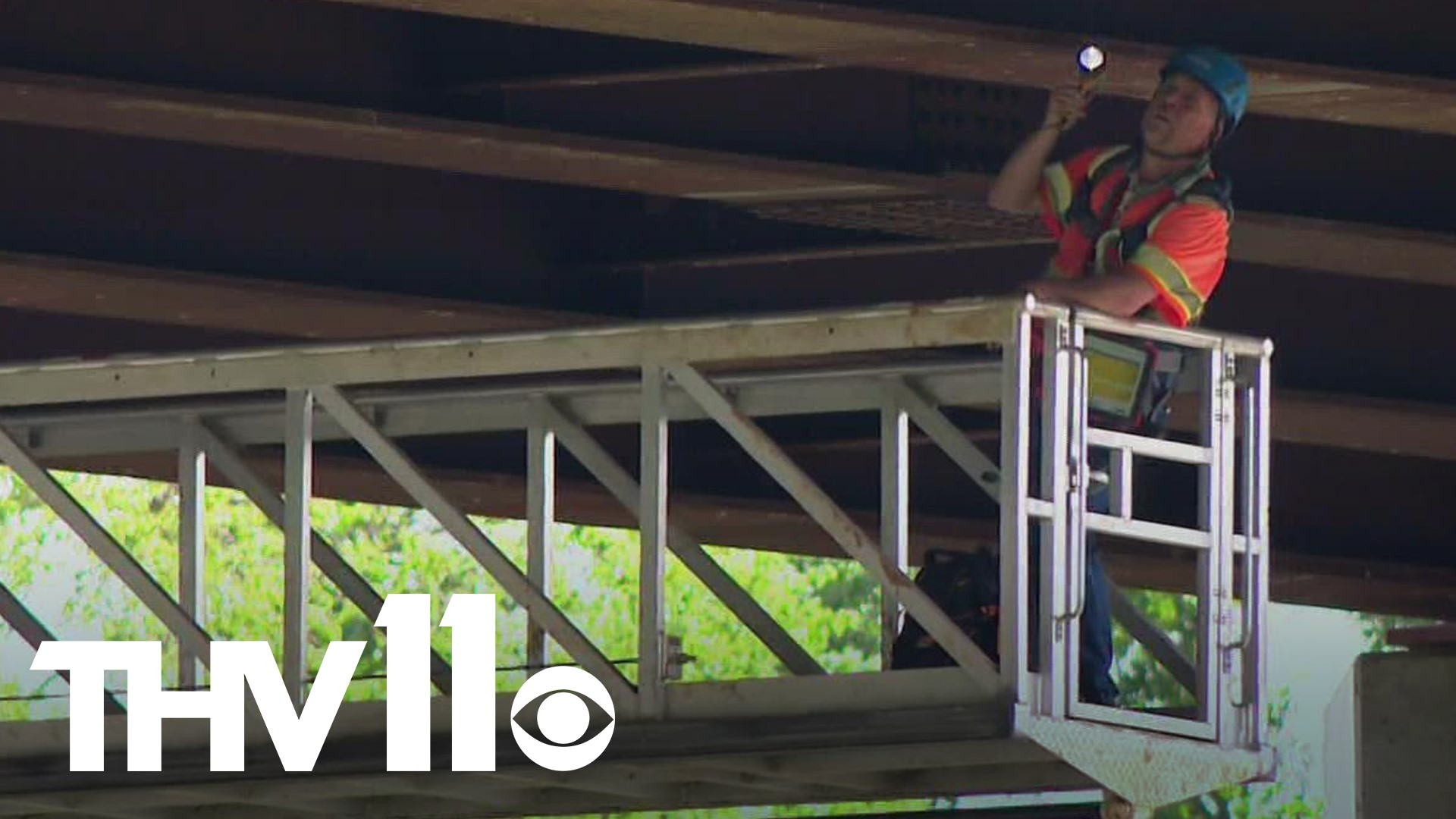ARKADELPHIA, Ark. — In the latest report card from the nation's civil engineers, America's bridges overall got a "C" Grade, but we are a year removed from the day Arkansas and Tennessee got a big old "F" on an important quiz.
The crack in the I-40 bridge to Memphis sent a shock across the state and sent Department of Transportation officials scrambling to get back on grade.
"We have about in Arkansas 12,700 to 12,800 bridge structures, and about 700 of those have non-redundant members on them," said Andy Nanneman, the head of the ARDOT Heavy Bridge Inspection Program, describing the critical parts that engineers worry most about, because if they fail, there's nothing else in the structure to absorb the load.
Nanneman confidently explains the science behind what his teams are tasked with on most days across the Natural State.
"Whether you're doing a routine on a multi-girder bridge or an inspection on a truss with non-redundant members, either way, they're working hard, paying attention," he said, which is a point that seems obvious, but has to be stated in the wake of the missed crack that led to at least one firing and two other early retirements and elevated him to the top spot.
"When it comes down to it, it's the inspectors in the field's responsibility to look at these non-redundant members," Nanneman said. "That was in policy and it just...this one got missed."
That one miss prompted a report from the federal government to assess ARDOT's inspection program. It made 18 recommendations, including some that sound alarming to a lay person, but that Nanneman says were already part of what his teams do or not difficult to incorporate.
"We're still doing the same procedures we did," he said, while guiding reporters through an inspection of the Veterans' Memorial Bridge carrying state highway 51 bridge over the Ouachita River in Arkadelphia.
"We are enhancing some of our fracture-critical procedures and other bridges, which causes a little extra time enhancing your documents and your procedures, but as far as scheduling wise, that has remained consistent," he said.
The inspection Nanneman describes is far less intense than what would go into an older structure on a busier waterway. In fact, this is the first routine inspection of the bridge at the two-year mark of its life.
"They're going to kind of come through on the top looking at the deck with a lane closure," he said describing the roadway inspection that will be visible to drivers as they slowly slide by in one open lane while a special utility truck crawls along carrying a two-person team under the bridge.
"Then they'll come underneath the bridge with a Aspen A-42 and look at the steel girders, the bearings and the top of the caps," Nanneman says.
After Memphis, each crew has at least one engineer helping out on site along with the inspector. They have a fleet of those contorting elaborate bucket trucks getting eyes on tight spaces often high above a waterway.
On this day, the height isn't that dramatic to the river below, but inspections of the bridge members below the surface of the water are a priority for the future.
"We are doing a lot more under water inspections this year. That has been a change," Nanneman said. "We have a consultant doing a lot of dives on bridges that that haven't been done before due to [the federal government's] recommendation."
Nanneman likes to point out that in addition to those recommendations, the federal report made an equal number of commendations. They are way he stops short of calling the missed crack a "wake-up call" for ARDOT. He prefers to project reassurance.
"I feel pretty good about our our deck area, the condition of our deck area compared to other states," he said. "I've got confidence in our inspection program and in our structures."

